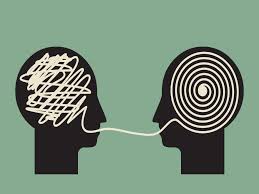Introduction
In Spain, companies striving for international growth and communication rely on skilled translators. As a result, the translator selection process has become essential for Spanish companies aiming to expand in global markets. Since Spain relies heavily on international trade, businesses need expert translators to ensure smooth communication. Moreover, over time, the criteria for choosing translators have evolved, integrating new technologies and evaluation methods.

Key Requirements for Translators
A. Academic Background and Certifications
A strong academic background is essential. For this reason, companies prefer translators with degrees in Translation and Interpretation, Philology, or related fields. In addition, certifications from professional organizations like ASETRAD or ITI add credibility.
B. Experience and Expertise
Experience in specialized fields—such as law, medicine, finance, and technology—is highly valued. In particular, companies often prefer specialized translators over generalists since industry-specific knowledge leads to more accurate translations, reducing costly errors. Consequently, specialized knowledge improves the quality and reliability of translations.
C. Proficiency with CAT Tools
Mastery of Computer-Assisted Translation (CAT) tools is increasingly required. As a result, Spanish companies prioritize translators proficient in tools like SDL Trados, MemoQ, or Wordfast, since these platforms improve efficiency and consistency.
D. Language Skills and Linguistic Competence
Excellent writing and comprehension skills are crucial. Therefore, many companies require C2-level certifications according to the Common European Framework of Reference (CEFR) to ensure linguistic proficiency. Furthermore, fluency in multiple languages is a significant advantage in the translator selection process.
Methods in the Translator Selection Process
The translator selection process in Spain involves multiple evaluation steps:
A. Translation Tests
Most companies conduct translation tests, where candidates translate a sample text under a strict deadline. Through this process, they evaluate accuracy, fluency, and terminology management. To avoid common translation mistakes, it is essential to understand best practices. Check out this guide on common translation mistakes and how to avoid them to improve translation quality.
One of the main criteria in translation tests is the accuracy and quality of the final text. To avoid common translation mistakes, it is essential to understand best practices. Check out this guide on common translation mistakes and how to avoid them to improve translation quality.
B. Personal Interviews
Interviews assess communication skills, professionalism, and problem-solving abilities. Moreover, some interviews also include oral language tests to verify fluency and adaptability in real-time scenarios. In addition, interviews offer an opportunity for companies to gauge personality and cultural fit.
C. Reference and Portfolio Evaluation
Companies request references from previous clients or employers. Likewise, reviewing a translator’s portfolio helps businesses evaluate the quality of their past work and assess their reliability. Thus, companies can make more informed decisions based on the applicant’s previous work.
D. Cultural Fit
Beyond technical skills, companies assess whether a translator aligns with their corporate culture. This includes evaluating adaptability, teamwork skills, and the ability to work under pressure. As such, cultural fit plays a key role in the overall success of the collaboration.
Key Factors in the Translator Selection Process
Besides skills, other factors influence hiring decisions in the translator selection process:
A. Availability and Flexibility
Meeting deadlines is crucial. Consequently, translators with high availability and the ability to handle urgent projects have a competitive edge in securing long-term contracts. This flexibility makes them more valuable to companies with fluctuating workloads.
B. Rates and Costs
Cost plays a significant role in decision-making. Therefore, companies compare rates to find cost-effective solutions while maintaining translation quality and efficiency. On the other hand, overly low rates may signal low-quality work, so balance is crucial.
C. Meeting Deadlines
A strong track record of meeting deadlines is essential. For instance, companies prioritize translators who can handle multiple projects simultaneously without compromising quality. In particular, punctuality and reliability are key attributes sought after.
D. Reputation and Credibility
Online reviews and recommendations on platforms like Proz.com or LinkedIn influence hiring decisions. As a result, a positive reputation, backed by excellent client feedback, boosts credibility. In addition, active online profiles can increase a translator’s visibility and attract more clients.
How Technology Affects the Translator Selection Process
Technology has reshaped the translator selection process in Spain. Key changes include:
1. Artificial Intelligence and Machine Translation
AI-driven tools like Google Translate, DeepL, and neural translation engines have reduced workloads. However, they have also increased demand for post-editing experts.
2. Freelance Platforms
Companies now hire translators via platforms like Upwork, Freelancer, and Gengo, allowing them to compare profiles, ratings, and rates easily.
3. Automated Selection Processes
AI-powered software assists in screening candidates by analyzing resumes, translation tests, and performance data.
Conclusion
The translator selection process in Spain has evolved significantly. Nowadays, companies now prioritize highly skilled professionals with specialized knowledge and technological expertise. Thus, the selection process includes translation tests, interviews, and portfolio reviews to ensure high-quality hires.
As technology advances, human translators must adapt to emerging trends. However, context-sensitive, high-quality translations remain essential for businesses. In the long run, translators who specialize and embrace new technologies will continue to play a vital role in global communication.




